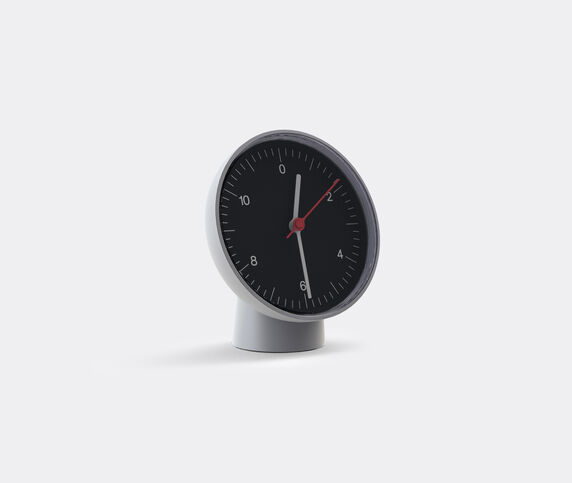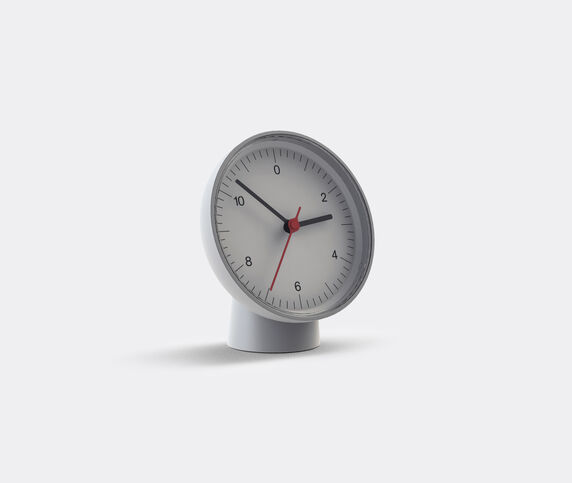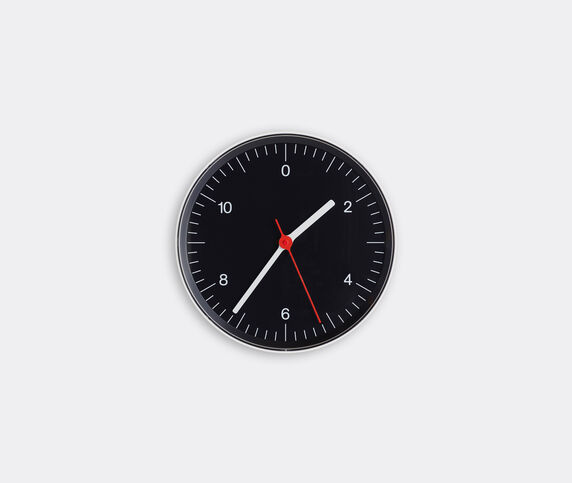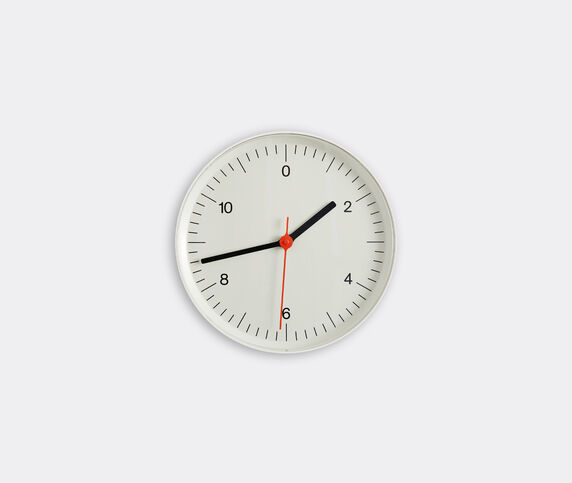Easily identifiable for its experimental riffs on a classic Scandi aesthetic, Hay harks back to the charm of mid-century Danish design while also accommodating the minutiae of contemporary life. At its core is a philosophy of high quality design at an affordable price, attained in part through a constant quest for cutting-edge technology. Launched in 2003, the Danish brand has built its name on home furniture and accessories, as well as textiles.
- price:
- Change view:
- Two
- Four
HAY Design
Husband and wife team, Rolf and Mette Hay, founded HAY in 2002 with the intention of creating "contemporary furniture with an eye for modern living and sophisticated industrial manufacturing". Combining the stable structures of architecture with the dynamics of fashion, the couple want to provide their customers with durable and high quality products that will add value, as well as good design that is accessible to as many people as possible.
Rolf, has a self-taught passion for design, while Mette, whose parents worked in the industry, focuses more on the accessories side. Mette is also responsible for setting up HAY Mini Market, a concept pop-up of lighting, textiles, stationary and glassware accessories. Its first installation was during Milan Design Week in 2014 and resembled a supermarket with aisles and shelves full of selected merchandise curated by Mette.
Three years later The HAY Kitchen Market was launched at the MoMA Design Store Soho, a collaboration between Mette and Frederik Bille Brahe, a Danish chef. A collection based on function, with essential pieces for every kitchen having been sourced from around the world. Glasses from Morocco or water pitchers from India were reinvented and reinterpreted for the collection. For Mette, the Kitchen Market is not about creating new art objects, but just making those mundane objects that bit more appealing. Various textures, colours and price ranges mean customers can select a few items or the whole range.
Rolf looks to designs of the 1950’s and 60’s as an example of the perfect partnership between high quality manufacture and high quality design. When curating collections for HAY it is not only important that HAY furniture stands the test of time, but that the customer will enjoy it for many years. Simple, but not ordinary, different, but not weird, is what drives the brand’s focus.
HAY continues its vision to create simple, functional and aesthetic design by collaborating with some of the most talented designers. The latest collaboration with Ikea in 2017, Ypperlig, features furniture, accessories and the iconic tote bag.
HAY so far:
- 400 current employees, the company started with three in 2002,
- 12 products in the original HAY collection from 2003,
- 375 or more items in the HAY Mini Market collection,
- A global empire, reaching more than 50 countries.
Ronan & Erwan Bouroullec for HAY
The two Bouroullec brothers were born in Brittany and later went on to study at the École Nationale des Arts Décoratifs in Paris and at the École des Beaux-Arts in Cergy-Pontoise. They became partners in design after completing their studies in the 1990’s and rely on each other for honest and rational points of view as well as emotional ones when it comes to the design process. Their work ranges from little utilitarian objects to architectural projects, domestic and office furniture, dishware and porcelain, home accessories and most importantly the design and organisation of interior spaces.
They grew in acclamation after being spotted by Giulio Cappellini in 1997 at the Salon du Meuble with their Disintegrated Kitchen (they were then awarded designers of the year in 2002).Their most famous designs come from their collaboration with Vitra in 2000, spanning over a period of four years. For example, the "Vegetal" chair replicates a natural structure, featuring branch like ribs intertwined to form the seat shell and made from 100% recyclable polyamide. In addition, the ‘Algue’ dividing screens and transparent curtains are plastic weblike structures which resemble plants.
Likewise, their Steelwood furniture collection for Magis in 2004, still ongoing, was highly praised for its simplicity of design, featuring wood instead of plastic.
Their various designs can be found as part of international museum collections, such as the Musée National d'Art Moderne - Centre Pompidou and the Musée des Arts Décoratifs in Paris, the Museum of Modern Art in New York, the Art Institute of Chicago, and the Design Museum in London.
Ronan & Erwan Bouroullec’s collaboration with HAY, named PALISSADE, features minimalist indoor and outdoor furniture. Made from standard tubes of steel, they are strong but not bulky and light without being fragile. The brothers believe it will perform well in cafés and restaurants as well as outdoor spaces.
Scholten & Baijings: collaboration with HAY
Danish husband and wife, Stefan Scholten and Carole Baijings are well known for their unique approach to colour, texture, shape and pattern. They established their design studio in 2000, creating subtle yet functional products, with an unexpected use of colour. They focus mainly on interior projects and textiles in clean, minimal forms balanced with craft techniques. To date their work is collected around the world and they have received three Dutch Design Awards, honoured with the ELLE Decoration International Design Award (EDIDA) for Young Designer Talent in 2011 and they received the Wallpaper* Design Award in 2015.
Their most famous designs include Colour Wood, tables with barrel-like legs inspired by Japanese bathing buckets, produced for the highly respected Japanese furniture manufacturer Karimoku in 2009. Made using sustainable sourced wood that would usually end up in paper mills. The transparent colours and graphic patterns printed on the top represent contemporary design intertwined with traditional craft techniques. In 2012 the couple collaborated with both 1616/Arita and MINI. For 1616/Arita Scholten & Baijings produced a porcelain collection that combined colours found in both Japanese and Dutch fine china, resulting in a collection of bowls, plates and tea cups to reflect both new and old traditions. Meanwhile for MINI the couple created a concept-car version of the iconic car, completely remodelling the car’s construction using novel innovations, such as portable and magnetic compartments and wheels made from transparent plastic. Their products and limited editions can be found in museums and gallerie:
- Cooper-Hewitt National Design Museum, New York,
- Art Institute of Chicago,
- Victoria & Albert Museum, London,
- Museum Boijmans van Beuningen.
In collaboration with HAY the couple have designed a wide selection of different furniture, textiles and accessories in keeping with their careful use of colour, pattern and graphic elements. Including Tilt Top Table, 13Eighty, Tea Towels, Colour Glass, Paper Porcelain, Colour Binder, Bed Linen, Paper Carpet, Colour Carpet and Dot Carpet.
Inga Sempé for HAY
Having completed her studies at the distinguished Villa Medici Académie de France in Rome and the ENSCI-Les Ateliers in Paris, Inga Sempé opened her own studio in 2000 and collaborated with Cappellini and Edra. Focusing primarily on furniture, lighting, objects and fabrics all made in stunning designs in a contemporary, modern style. The original shapes and forms, and the variety of materials used, all produce items that are practical, versatile, resistant, lightweight and comfortable, not just easy on the eye. In 2003, she won the award of Grand Prix de la Création de la Ville in Paris in the design category and the Red Dot Design Award in 2007.
Her most prominent designs to date have been the Double Access Shelf and La Chapelle Table for the Swedish company David Design Inga. The Double Access Shelf allows for two different storage layouts and access, so you can display items on either side. Perfect as a room divider or free standing shelf. While the La Chapelle Table, made in 2006, is neither overly technical nor overly minimalist. A lightweight table with a graphic leg structure and off-round top. In 2007, Sempé produced the Plissé suspension lamp in collaboration with Luceplan. A stylish pleated shade that easily adapts to the variations of the volume.
In collaboration with HAY, Sempé has created the idiosyncratic accessories Letter Box and Pinorama for practical storage in a variety of different patterns and sizes, while still looking stylish. While Ruban is a range of oak frame mirrors, wrapped in colourful ribbon around the edges. They can be hung individually or arranged together in clusters.























































































